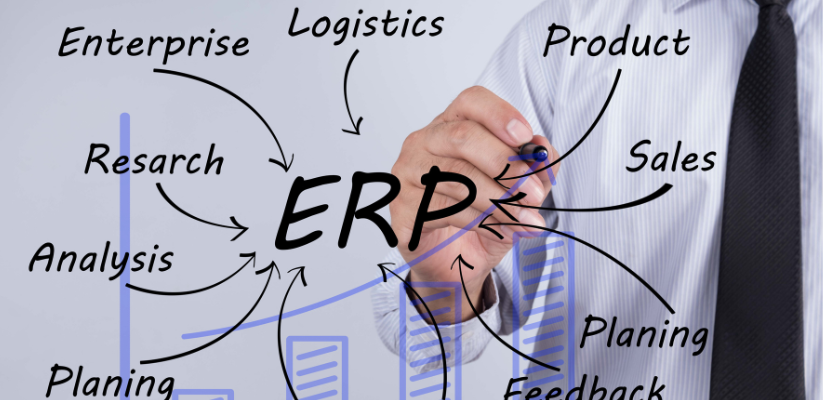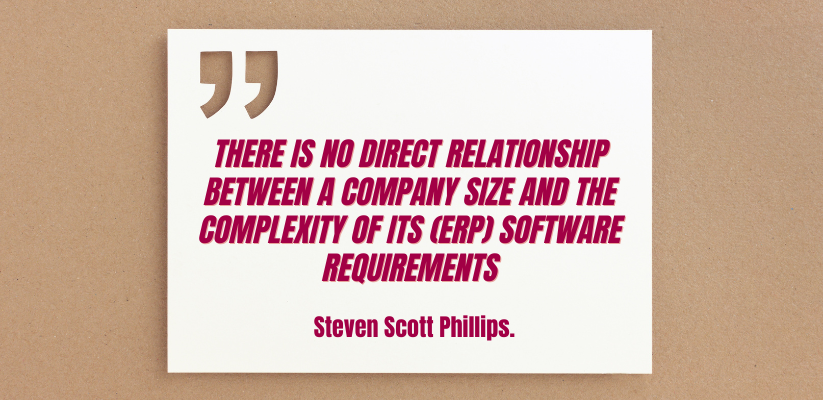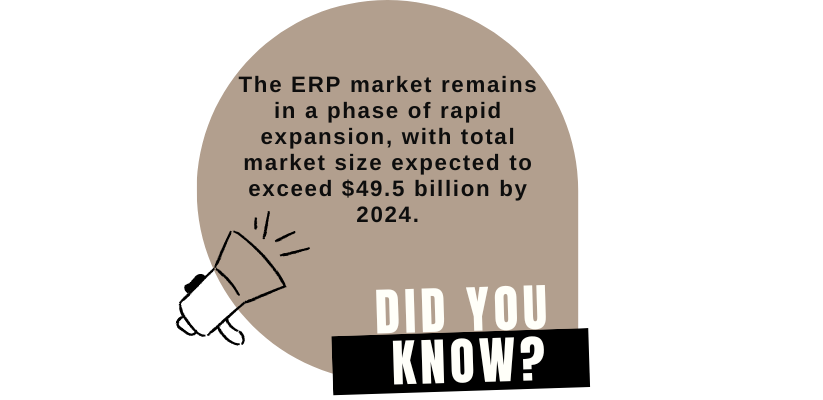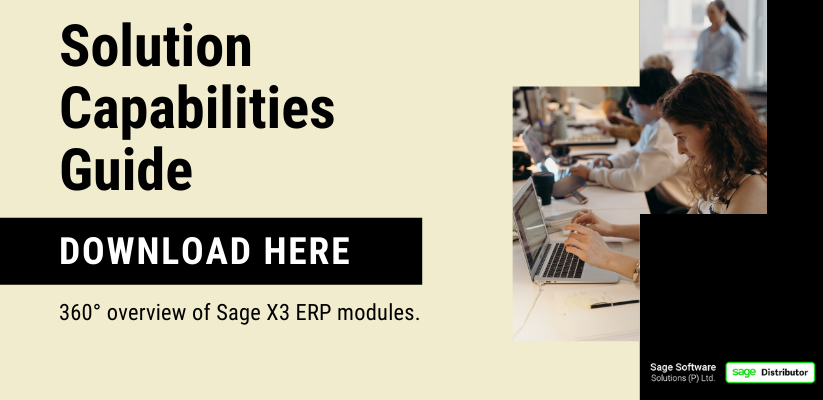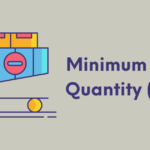Summary: Modular ERP systems give a comprehensive view of critical business functions & processes in real-time. They track raw materials, cash, orders, and purchase records and ensure that the company fulfills its business commitments. Moreover, modular ERP systems contain various applications that share data across each business department — finance & accounting, manufacturing, inventory & purchasing, sales, marketing, research & development, and human resource department.
Some challenges that will influence modular ERP usage in your business in 2022
1. ERP failures are still a significant issue
Companies across industries are implementing Enterprise Resource Planning (ERP) systems to increase productivity and cut operational costs. But most organizations don’t conduct hands-on training sessions for their workforce to learn how to operate the ERP system, which results in suboptimal performance. Moreover, few organizations don’t tie up with industry-leading ERP consultants, resulting in bad implementation.
And here’s how bad ERP implementation can impact your organization:
- The workforce isn’t well trained to operate the ERP solution resulting in suboptimal performance.
- You don’t get a broad array of add-on modules to choose from.
- ERP consultants don’t often show up if you need them to upgrade or repair the system.
- The third-party vendor doesn’t maintain 24/7 servers, meaning you require an in-house IT team to maintain and upgrade the supporting digital infrastructure.
<<<Also Read: 4 Reason why ERP Implementation failure are still high>>>
2. Industry-specific ERP systems are still a distant dream.
The days of generic ERP systems, which are expensive and slow, are over. Instead, organizations need agile and competently-priced modular ERP solutions aligned to their business goals. Unfortunately, that’s not the case right now. ERP vendors are still struggling to create industry-specific solutions built only to serve the needs of a particular industry. For example, an organization manufacturing small parts for the aviation mro software might not require a customer relationship management (CRM) module. On the other hand, a large IT organization with a back office handling multiple customer requests simultaneously would need one.
Third-party customizations require a deep knowledge of the significant pain points an industry is facing. And ERP vendors need to catch up with that as early as possible.
3. Sweet packages for small and medium-sized businesses.
Here are some facts about small and medium-sized enterprises (SMEs) you should know about:
- Around 36 million SMEs are providing employment opportunities to 80 million people.
- They contribute 40% of the total exports in the country, 45% of the entire manufacturing output, and 8% of the total GDP in India.
So, ERP vendors have substantial untapped potential in the SME space. The only challenge is that SMEs don’t want to pour in a lot of investments to implement ERP software. One of the primary advantages of a modular ERP solution is that it allows your business to automate processes and functions within your budget.
And how does it do that?
By providing only selective modules that an SME requires at a particular point in time. And when the SME decides to expand its business operations or open branches in different geographies, it can purchase extra modules to provide better services.
4. On-premise and on-cloud solutions
It’s been many years since on-cloud solutions revolutionized the ERP market forever. But today, a plethora of ERP systems have flooded the market, and organizations are struggling to select the best one for them.
However, as far as cloud-based ERP solution is concerned, they provide immense benefits to companies of all sizes. Here are a few points that prove it:
Cloud ERP solutions are:
- Less expensive than their on-premise counterparts.
- Require less maintenance.
- Adding or removing modules is comparatively easy.
- With new & improved security protocols, cloud ERP systems have increased protection.
- ERP vendor takes care of upgrades & maintenance.
The difference between on-premise and on-cloud ERP software is immense. As a result, ERP vendors should understand the organization’s pain points and check their budget before offering the right ERP software.
Top advantages of a modular ERP
Consider these reasons if you are looking forward to implementing a modular ERP.
- Allows SMEs to enjoy the benefits of full-fledged ERP software at a lower cost by providing the flexibility to pay only for those modules they require the most.
- A two- or three-tier phased approach can be adopted, significantly reducing implementation time.
- The workforce can learn to operate the ERP software quickly and efficiently.
Disadvantages of a modular ERP
While modular ERP allows SMEs to get the benefits of ERP software at a fraction of its cost, that might not always be the case.
Here are a few reasons to elaborate on this point:
- Different modules serve different functions, which might sometimes make the whole system incompatible.
- Most ERP systems come as stand-alone packages and new modules might not be compatible with cloud systems.
- Sometimes a modular ERP might contain massive amounts of redundant data, requiring extra space for storing data for which you will have to spend extra money.
- Significant investments for purchasing extra modules and a fall in employee productivity due to training sessions are a few other challenges.
Top 5 essential modules of a modular ERP software
Modern ERP software has multiple modules. Here are the top 4 modules that businesses of all sizes use.
1. Finance & accounting in modular ERP
Maintaining appropriate financial statements is mandatory for companies across all industries because of the following reasons:
- Complying with rules and regulations by governments worldwide.
- You know how much you owe to third parties.
- You know how much third parties owe to you.
Here’s how the finance & accounting module can help you:
- Track Accounts Receivables (AR)
- Track Accounts Payables (AP)
- Create, update, and maintain the general ledger and sub-ledgers.
- Perform financial planning by creating critical financial reports, including board reports, profit & loss statements (P&L), and run scenario plans.
- Prepare tax receipts, loan statements, balance sheets, and payments quickly & efficiently and without any errors.
Another advantage is that when the whole process is automated, your workforce can focus on mission-critical tasks that require critical analysis.
2. Supply chain management in modular ERP
The primary purpose of manufacturing products is to sell them to the end consumer. And supply chain management plays a pivotal role in that. It starts by collecting raw materials in the inventory, which are then sent to the manufacturing facility where finished products are produced. Afterward, these products are stored in the warehouse. Later, as per market demand, these products are forwarded to suppliers and distributors who deliver them to the end consumer.
The supply chain management module also controls product recall, where defective or potentially unsafe products are retrieved from the consumer.
Here are some features of the ERP system that help improve the supply chain management module:
- Purchasing Cost management
- Inter-company/Inter-site transactions
- Expenditure authorization
- Request for Quotations
- Logistics
- Stock valuation
- MRP calculation
- Receipts
- Supplier invoices
- Quality assurance
- Sub-contract management
3. Sales & Marketing in modular ERP
An efficient sales team reaches out to people who are most likely to purchase your company’s products and subscribe to your services. In addition, a productive sales team ensures that your business has a steady stream of cash that helps expand your business.
On the other hand, the marketing team is responsible for spreading the word around and invoking interest in the minds and hearts of consumers to try your products. They publish blog posts, write creative copies on social media platforms, send emails, and connect with people through online and offline channels, solving their doubts.
Here’s what the sales & marketing module of an ERP system does for your business:
- Run marketing campaign
- Scheduled budget monitoring
- Multi-level monitoring of current marketing operations
- Mass mailing of marketing campaigns
- Phone campaign wizard
- Appointments, calls, tasks, custom orders
- Unique business partner identification
- Customer breakdown: ordered, delivered, invoiced, group, payer, risk, and factor
- Management of contacts by address
- Sales contact follow-up
- Commercial products, service provision, and after-sales
- Configurable sales cycle: Quote/Order/Delivery/Invoice
- Historical sales quotes, orders, and open orders signed
- After-sales bill of materials management
4. Reporting and business analytics in modular ERP
A business receives data from multiple sources every day and it’s essential to critically analyze it to gain valuable insights from it. The primary reason for evaluating business data is that it allows businesses to make better decisions, understand changing market conditions & customer preferences, forecast international trade situations, and empower each role.
Notifications, real-time analytics, and alerts form the core of the reporting and business analytics module of an ERP. Here are other benefits of this module that will help you become an industry leader:
- Configurable inquiries on any data table
- Manage data from multiple sources through a single hub.
- Use built-in data models for reporting
- Robust financial reports (Layouts include Income Statement, Balance Sheet, Cash Flow, Trial Balance)
- Create dashboards of your KPIs with Excel charts and graphs
- Multi-currency support
- Queries and formulas
- Intuitive on-premise and cloud user interface
- Fast processing and quick dynamic updates to data
- Drill-down to GL account balances and GL transactions
- Ready to use reports
- Analytical Income Statement layouts
